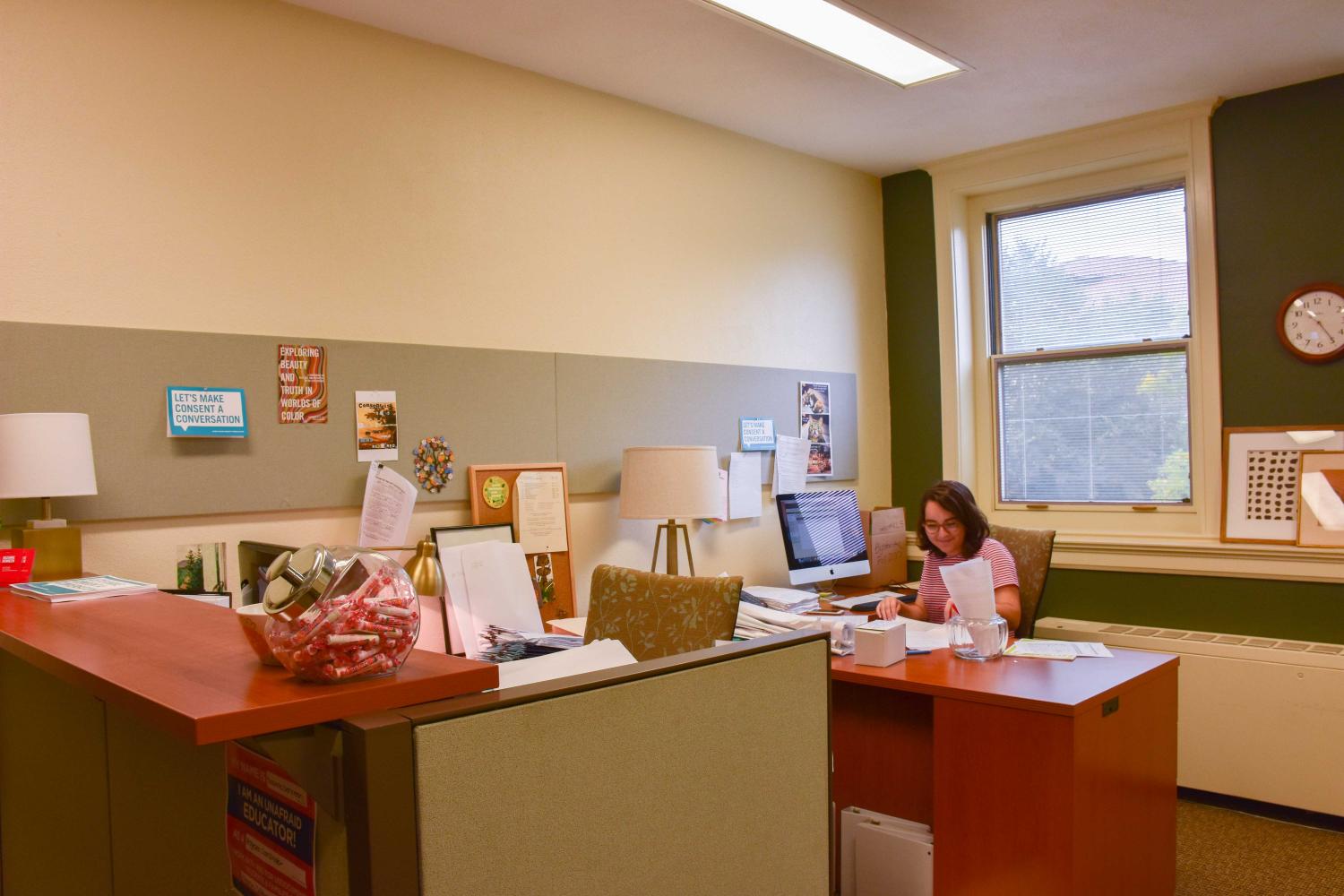Surveys Help Find Ways to Improve Student Life
College junior Kira Findling working in the Office of Diversity, Equity, and Inclusion, which recently sent out a survey assessing student satisfaction on campus with accessibility, equality, and other issues.
September 15, 2017
With a significant dip in student enrollment and retention this academic year, the administration began emailing students and faculty survey questions in an effort to holistically improve the Oberlin experience. The data from the surveys have indicated that housing, communication, and sexual consent awareness efforts are in need of much improvement and that a focus on student-faculty relationships should be reinforced.
Oberlin, like many other schools, frequently uses surveys to make the college experience as convenient and favorable as possible for its community.
Assistant Vice President for Institutional Research and Planning Ross Peacock conducts semi-regular surveys of incoming students, graduating seniors, alumni, and parents.
“If there are parts of a survey that I think certain offices should take a special interest in, I’ll forward those parts to those offices,” Peacock said. “I’m kind of like the broker of the information — I look at it, I analyze it, and I come to my own conclusions, and then [I] just encourage other offices to look at it. … It’s up to them to see whether or not they’ll act on anything that the surveys might say.”
Vice President and Dean of Students Meredith Raimondo said that because Oberlin did not reach its target number of new students this year, she has been working to recover enrollment rates while also maintaining student retention. Raimondo added that she has done this by looking at student experiences and contemplating their consequent questions, satisfactions, and concerns.
“Oberlin students are not that excited about our housing,” Raimondo said. “Not a surprise, right? … On the other hand, students are generally pretty happy with their relationships with faculty. That’s really good to know, and that means we need to keep investing in that area.”
As the College turns a new leaf with the arrival of President Carmen Twillie Ambar, the administration has emphasized that listening to student opinions is more crucial than ever. Ambar has noted that she will be holding office hours to allow students to voice their suggestions to the administration as well.
Media Relations Director Scott Wargo said that the survey results have been varied so far.
“We are still assessing the data, but one of the things we learned is that many members of the community desire more frequent communication/emails to stay informed about campus news, while others — students, for the most part — were generally not in favor of more frequent communications,” Wargo wrote in an email to the Review.
Wargo said that the Communications Office will work with the Center for Information Technology to address concerns with communication.
“To meet the needs of all community members we are working with CIT to explore technology solutions that will provide a greater level of individual customization for both content and frequency.”
The Office of Equity, Diversity, and Inclusion has found that the College needs to improve its sexual consent awareness efforts as well.
“We are creating a year-long video and poster campaign to keep the conversation and education going,” Title IX Coordinator and Director of Equity, Diversity, and Inclusion Rebecca Mosley said.
Peggy Orenstein, OC ’83, will be speaking as part of the campaign Oct. 9.
“The responses from students were very helpful in letting us design education that speaks to the information they said,” Mosley added.





















